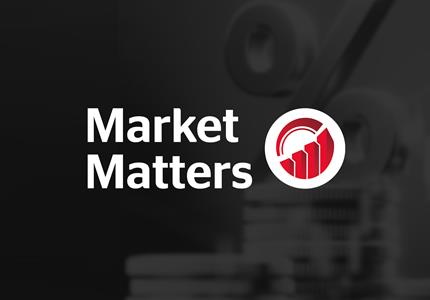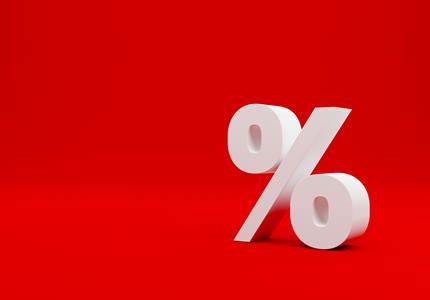

We live in challenging times but opportunities exist
We are living through a period of economic and political uncertainty and change. From a cyclical perspective, global growth continues to slow, led by China but activity is also slowing in Europe, Japan and emerging markets with weaker global trade and industrial production a notable concern. The US is also slowing due to a number of factors including the weaker global economy, increased political uncertainty, late cycle pressures and lessening fiscal tail winds.
Global economy
The good news is that the risk of a global recession remain low, although the threat of a European recession is much higher. There are promising signs that the US and China will reach a short-term agreement on de-escalating the tariff wars whilst it looks increasingly likely that a “soft” Brexit deal can at last be agreed after a December election. In addition, central banks, and the Fed in particular, have resumed their easing policies which should help to stabilise activity and lessen the risk of any further liquidity tightening. However the risks are skewed to the downside and the threat of policy error at this late stage of the business cycle is a concern.
On a positive note, global inflationary pressures remain subdued and indeed, I believe that global disinflationary forces prevail on a secular basis, largely due to high debt levels, poor demographics, excess savings and major technological disruption across a large number of industries. These secular forces mean that global economies and asset markets are far more sensitive to rising interest rates than in previous cycles.
Central banks
Given this background, central banks will err on the side of caution and keep monetary policy easy. They will also remain very sensitive to financial market volatility and any signs of weaker data or softer inflation with little tolerance for economic pain. Deflation is a very real threat for many economies when the next downturn hits and is also much harder to fix than inflation.
The Fed over tightened monetary policy last year, causing real rates to rise which, in turn, resulted in problems for dollar debtors outside of the US and acted as a drag on domestic activity via a stronger dollar, rising financing costs and increased financial volatility. Thankfully, the Fed has changed tack and turned more dovish. The Bank of China has cautiously eased policy in order to support the slowing economy and the government has also embarked on targeted fiscal easing. It is likely that further stimulus will be required to stabilise the economy but China will continue to slow over the next few years. The Eurozone is facing a number of economic imbalances and political challenges. For example, the Euro straightjacket means that two of the major determinants of market prices (exchange rates and interest rates) are mispriced, which is negatively impacting growth, inflation, employment, productivity and debt levels. In addition, the region is very exposed to the global manufacturing recession. Meanwhile, negative interest rates, low bond yields and ECB quantitative easing are here to stay for a long time whilst Christine Lagarde will up the pressure on European governments for fiscal reform.
Brexit and the pending election will be the main determinants of Bank of England policy over the next few months. However, with the UK economy underperforming, given the weak external environment and with inflation moving back below target, it is unlikely that interest rates will move materially higher during the rest of this cycle. The Bank of Japan has little option other than to keep interest rates near zero for a very long time given the weak growth and inflation background. Many emerging market central banks are also cutting interest rates in order to stimulate growth. Indeed, this is being backed up in some countries with significant fiscal and regulatory reforms.
There is growing debate about the effectiveness and consequences of current monetary policy. There is little doubt that low/negative interest rates, combined with regulatory pressures, are causing significant problems for banks, insurance companies and pension funds. Also, the plentiful and cheap liquidity provided by central banks over the past decade has arguably resulted in the destruction of efficient capital, kept “zombie” companies afloat and widened the wealth gap. On the other hand, central banks have little option other than to stay accommodative given the macro background.
Bonds
There are a number of factors exerting downward pressure on global bond yields, including slower global activity, low structural growth, disinflationary forces, tightening global liquidity and excess global savings. Although longer-dated sovereign yields are unlikely to move materially lower in the absence of a recession/financial crisis, yields are likely capped on the upside given the current macro background. G4 sovereign bonds, and US Treasuries in particular, should remain a good hedge in portfolios against weaker growth, falling inflation and elevated economic and political concerns. UK gilts could be negatively impacted by the election or Brexit outcome, but this is unlikely since I expect the UK economy to continue to struggle and monetary policy will stay supportive.
Credit markets are being supported by lower sovereign yields, central bank easing and the continued search for yield in a low growth/low inflation world. Provided a US recession is avoided, these factors should continue to underpin demand. However, valuations are expensive and a further deterioration in growth prospects and, hence earnings expectations, could put upward pressure on yields and spreads. In particular, the US High Yield (HY) sector looks vulnerable given the excessive levels of leverage inherent in many sectors at a time of slowing growth, declining earnings and falling margins. The Euro HY sector also looks exposed due to the risk of recession. Even Investment Grade is exposed to slower growth since approximately 50% of the IG universe is rated only one notch above junk. Emerging Market debt looks attractive on a selective basis due to the higher yields available and improving fundamentals. A dovish Fed should also ease currency depreciation pressures and allow many central banks to cut rates, whilst a softer dollar would add further support.
Equities
Equities have recovered strongly from last year’s growth scare, despite the challenging backdrop. As earnings expectations have been downgraded, valuation multiples have expanded in anticipation of a continuation of the “Goldilocks” scenario where global growth stabilises at a reasonable level, recession is avoided, inflation remains subdued, central banks maintain an easing bias and earnings slow but are not crushed. Provided that a US recession is avoided, markets should continue to enjoy plentiful liquidity and modest growth. From a valuation perspective, this is a mixed picture since some markets, sectors and stocks look expensive whilst others remain cheap on most metrics. In addition, relative to bond yields and interest rates, many markets look reasonable value. Equities can probably overcome the pervasive economic gloom and make further headway over the next six to 12 months, largely because money, credit and liquidity are becoming more expansionary. An easing of trade concerns and a Brexit breakthrough would also help and could trigger a “risk on” change in psychology. However, the upside for many markets is probably capped unless global growth re-accelerates, which is unlikely, or in the absence of an aggressive fiscal policy response, which does not seem likely any time soon. However, we are also acutely aware of the growing underlying threats to both the global economy and financial markets, which are creating a more unsettled environment for financial assets. Having been materially downgraded, earnings are coming in mixed and will likely be moderate at best next year, with the risks tilted to the downside. Given this, the driver of returns is again likely to be multiple expansion. However, there will be a limit to any re-rating given the late stage of the business cycle, the macro background, the changing monetary environment and the lack of corporate pricing power. Hence, upside for the markets is likely moderate and alpha will probably be more important than beta for equity performance. Beaten down sectors and stocks are due for a bounce and should benefit from another reflationary impulse, assuming the growth outlook stabilises and policy error is avoided. However, any such move has limited upside given that growth, inflation and interest rates will likely stay low for some time to come. We also need to keep a very close eye on company cash flows. In aggregate, US companies have strong cash flow generation enabling a healthy allocation to capex, dividends and share-buybacks and providing a strong support to the markets. However, not all sectors are in a strong position and the increase in cash flow over recent years has supported a rapid leveraging up of non-financial companies. In a weakening economic environment, US corporates could be facing declining cash flows and be forced to cut capex, dividends or share buy-backs. This would also be very problematic for US credit markets, as previously mentioned, especially in the HY sectors.
Relatively stronger US growth, superior returns on capital and buoyant share buyback activity favours US equities over other developed markets despite more expensive valuations. The US economy and financial markets are facing a more challenging period, but for US equities to significantly underperform other markets over the next few years, it would either take a recovery in the global economy or a major de-rating of US equities. I think this is unlikely, especially since the Fed is now easing policy. Emerging markets have lagged over the past few years due to a number of reasons including a slower China and world economy, falling global trade, rising financing costs, tighter Dollar liquidity and a stronger Dollar. Many of these trends are longer-term in nature and caution is required given the fragile macro backdrop. However, an easier Fed and a weaker Dollar is enabling many countries to also ease policy whilst the long-term growth outlook in many economies remains superior, especially in Asia, and valuations in some areas look compelling.
UK equities have underperformed for some time due largely to the Brexit uncertainty but also because of a weaker economy. The outlook continues to look tricky and even if a conservative majority is returned and a Brexit deal delivered, a long period of political and economic upheaval, negotiation and uncertainty lies ahead. On a more positive note, UK assets are undoubtedly cheap, austerity has ended and both monetary and fiscal policy should work in tandem to improve the long-term outlook. A significant opportunity to add to UK weightings is building but it may still be too early to act with conviction given the risks. The market should also benefit from increased M&A activity.
I am positive on the outlook for Japanese equities, despite the weak growth/low inflation outlook. This is largely down to reasonable valuations, solid earnings growth, rising returns on capital, improving corporate governance and an increasing focus on shareholder returns. I would also hold unhedged exposure to the Yen, which looks cheap on a long-term basis, whilst remaining a risk-off beneficiary. European equities look fair value but are unlikely to enjoy anything other than a cyclical bounce should reflation succeed given the weak growth outlook and the longer-term economic and political challenges. In addition, negative interest rates and bond yields are very problematic for banks (and other financial institutions), which are already under capitalised, overly exposed to European sovereign and corporate debt and which have not yet properly accounted for potential bad loans.
We are positive on our core long-term themes, which include; the growing demand for healthcare services as the population ages and grows; harnessing the world’s growing wealth through investing in consumer staples and consumer discretionary companies; accessing the superior growth in many emerging markets; investing in companies which will drive productivity gains and superior growth in addition to meeting the environmental challenges through technological disruption and innovation. It’s true that some of these themes face challenges and headwinds. For example, the technology sector is dealing with a number of risks including tighter regulation, higher taxes, trade and intellectual property disputes, a slower global economy and the threat of break-up for “big tech”. Also, whilst the world will continue to get wealthier, the distribution and composition of that wealth will change, as will consumer trends. A global recession or higher inflation would also have a profound impact on global wealth and consumption patterns. Healthcare stocks look good value and are beneficiaries of the ageing demographics, but US companies would be hit hard should a newly elected Democratic government enact its health care plans. We continuously review all of our themes to ensure that we are appropriately positioned in funds and stocks that will benefit from these evolving trends.
Currencies and commodities
The dollar has remained strong due to a combination of factors such as superior relative US growth, higher real and nominal yields, Fed monetary policy and tighter liquidity. Although the Fed is easing policy, I think these trends can continue a while longer, although a softer dollar would be a net positive for the global economy. Sterling looks cheap but will likely remain so until we have more clarity on Brexit and the election and could take another hit in the event of a worst case outcome. The euro and yen look cheap relative to the dollar on a long-term fundamental view. However, I expect both currencies to remain so given the macro background and economic outlook for both regions. The Chinese authorities appear to be trying to keep the yuan relatively stable against the dollar during the delicate trade negotiations. This policy will likely continue unless the economy weakens further, or should negotiations with the US take a negative turn. In such a scenario the authorities may well let the currency weaken, partly to stimulate growth as a more favourable option to other monetary or fiscal stimulus and also, perhaps, to remind the US that they have some tools to counter a trade war.
The oil price will likely stay in a broad range of $40-70 based on more balanced supply and demand, softer global growth, replenished inventories and Middle Eastern politics. Longer-term, the growing use of alternative energies together with increasingly efficient and expanded shale supply should exert downward pressure on prices. I expect gold to move higher over the next few years for a number of reasons;
- interest rates and bond yields are set to stay very low/negative for a long time
- as central banks resume money printing, this effectively debases the underlying currencies;
- should governments embark on major fiscal stimulus alongside the very easy monetary stance, this will likely lead to higher nominal growth and inflation further down the road
- if the macro economic outlook deteriorates and results in either a recession or a further drop in inflation, this should be positive for gold as it also tends to perform well in deflationary times
- gold benefits from a weaker dollar.
It therefore makes sense to have some gold in portfolios as a diversification and hedge against many of the tail risks inherent in today’s markets.
Investment strategy
Hopefully, the global growth outlook will stabilise over the next few months thanks to easier financial conditions, a more Dovish Fed, additional Chinese easing and a de-escalation of political concerns. However we should also be very conscious of the changing economic environment and growing late cycle and political risks. In addition, returns from most asset classes are almost certainly going to be lower and harder to come by over the long-term given the changing macro backdrop, expensive valuations and in view of the structural low growth/low inflation outlook. Volatility for most asset classes is also expected to increase over the next few years.
Consequently, I think portfolios should be defensively positioned at the current time with equity exposure towards the bottom of permitted ranges and higher cash weightings than normal. I would also have some exposure to longer-dated treasuries / gilts for balanced or lower risk mandates as a hedge against recession/weaker growth and lower inflation. A modest exposure to gold for suitable clients also makes sense. We cannot ignore the threat from higher inflation and should the cycle turn, this would require a different investment strategy. However, I do not expect this to happen until after the next recession and an aggressive fiscal response. Within the equity exposures, it’s possible that the current period of central bank reflation will enable cyclicals and value to outperform for a period, but defensive sectors and markets should continue to generate higher returns over the long-term. I also think that income will form the majority of returns for most asset classes over the next few years and that stock, sectoral and geographic asset allocation (including currencies) will also be key drivers of returns. Importantly, interest rates and cash returns are very unlikely to move significantly higher for some time to come. Hence, hopefully we can continue to deliver attractive relative and absolute returns for our clients through thorough research and active management, even if the market environment remains more challenging, as I expect.
I’ll be doing regular updates looking at the macro environment and am always happy to discuss and debate with clients if you want to contact me at kboscher@ravenscroftgroup.com


